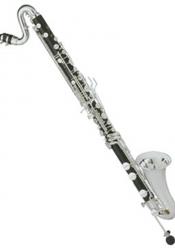Bass Clarinet: A new timbre for new times
Music in the Romantic Era began to deviate from Classical conventions within all elements of music including tempo, dynamics, key and time signatures, and instrumental timbres. Varying timbre, in particular, was crucial for expressing the full range of emotions composers creatively sought to convey. A need for depth inspired the creation of new instruments, such as the bass clarinet. Originally deemed Gilles Lot's "basse-tube" in Paris 1772, the bass clarinet helped provide a richer, 3-octave sound that other reed instruments could not quite evoke. There were other variations created over the next 20 years bearing likenesses to a bassoon or saxophone, but the man credited for the most modern rendition is Adolphe Sax in the 1830's (patented in 1846). It was then that this instrument found its way into orchestral pieces-- scored solo by Giacomo Meyerbeer, then greatly popularized by composers Franz Liszt and Richard Wagner. The bass clarinet remains a versatile staple to major arranged works today, as its range is broader than any other non-percussion instrument.

